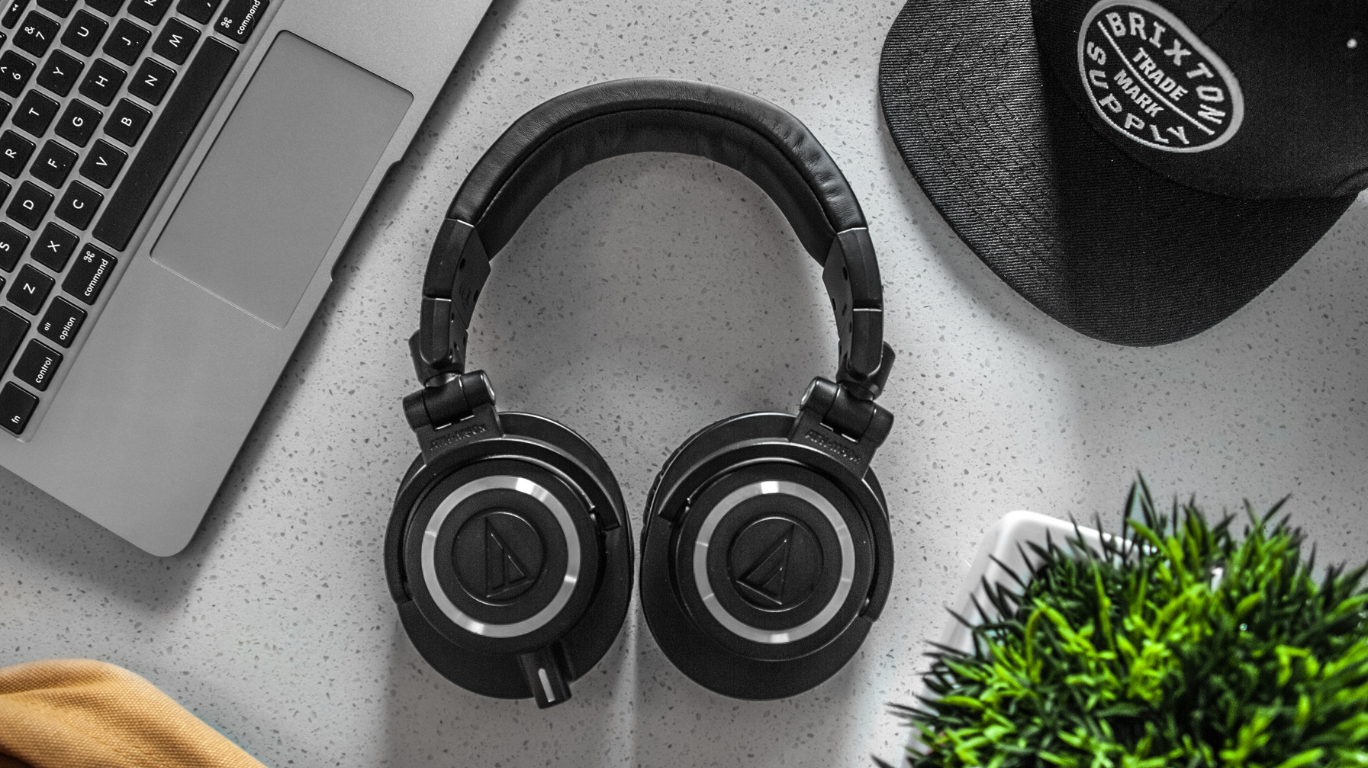Confused about headphone impedance? You’re not alone. This often overlooked spec can greatly impact your listening experience, and understanding it can help you make more informed audio purchases. Let’s dive into the impedance world and discover why it matters for your headphones.
What Is Impedance?
Impedance is the measure of resistance that a device presents to the flow of alternating current. In simpler terms, it refers to the resistance of the circuit to the current. When it comes to headphones, impedance indicates the amount of electrical resistance that the headphones offer to the audio source.
Headphones with higher impedance require more power to deliver high audio levels, making them ideal for professional audio equipment. On the other hand, low-impedance headphones are better suited for consumer audio devices such as smartphones and portable music players. Understanding the concept of impedance is crucial when choosing headphones, as it directly impacts the audio quality and compatibility with various devices.
What Is Headphone Impedance?
Headphone impedance is the measure of resistance to the flow of an alternating current in headphones. It is represented in ohms and plays a significant role in determining the power needed for the headphones to produce a specific volume level. Having a good understanding of headphone impedance is crucial as it can affect the sound quality and compatibility with different audio devices.
Headphones with low impedance (below 25 ohms) are ideal for use with portable devices like smartphones, while those with high impedance (over 25 ohms) may require dedicated amplifiers for optimal performance. When looking for headphones, it is important to consider the impedance to ensure they are suitable for your intended use, whether it be for studio monitoring, casual listening, or professional audio work.
What Are the Common Impedance Ratings for Headphones?
The common impedance ratings for headphones typically range from 8 ohms to 600 ohms. Here are the common categories:
- Low impedance: 8-32 ohms. Suitable for portable devices like smartphones and tablets.
- Medium impedance: 32-100 ohms. Compatible with a wide range of audio devices and offers a balanced performance.
- High impedance: 100-600 ohms. Ideal for professional audio equipment and audiophile-grade devices, delivering high-fidelity sound.
When selecting headphones, understanding the impedance ratings is crucial for compatibility and performance.
Pro-tip: When choosing headphones, always consider the impedance rating in line with your audio device’s capabilities to experience optimal sound performance. With the right impedance, your headphones will perform like a rockstar, not a one-hit wonder.
How Does Impedance Affect Headphone Performance?
- Impedance plays a crucial role in headphone performance as it affects power requirements, ultimately impacting sound quality and volume. Headphones with lower impedance (under 50 ohms) are suitable for portable devices like smartphones and MP3 players.
- On the other hand, headphones with higher impedance (over 50 ohms) require more power and are better suited for professional audio equipment, providing superior sound quality and finer details.
- When choosing headphones, it is important to consider the impedance of the source device. Using high-impedance headphones with low-powered devices can result in low volume and subpar sound quality.
- Conversely, using low-impedance headphones with high-powered devices can lead to excessive volume and may even cause damage to the headphones.
Here’s a true story that illustrates the impact of impedance: A music producer mistakenly used high-impedance headphones with a smartphone, resulting in a disappointing mixing experience due to the lack of power and clarity. Switching to low-impedance headphones greatly enhanced the audio quality, allowing for precise mixing and mastering.
What Is the Relationship Between Impedance and Volume?
The correlation between impedance and volume is crucial when it comes to headphones. Headphones with lower impedance (such as 16 ohms) require less power to produce high volume, making them ideal for portable devices like smartphones. On the other hand, headphones with higher impedance (such as 250 ohms) require more power to achieve the same volume, making them more suitable for use with amplifiers or high-powered audio equipment. It is important to match the impedance of the headphones with the output impedance of the audio device for optimal performance. A mismatch can result in either inadequate volume (when using high output impedance with low impedance headphones) or reduced sound quality (when using low output impedance with high impedance headphones). Understanding this relationship is crucial in making an informed decision when selecting headphones for specific usage scenarios.
How Does Impedance Affect Sound Quality?
- Impedance plays a significant role in sound quality by impacting the headphone’s frequency response and damping factor. Headphones with higher impedance can result in better sound quality due to lower distortion and improved control over the audio signal.
- High-impedance headphones work well with high-quality audio equipment, offering a more accurate and detailed sound reproduction with enhanced dynamics and transient response.
- These headphones are often preferred for studio monitoring and critical listening as they can reveal subtle nuances in the music.
- However, low-impedance headphones are more compatible with portable devices and smartphones, making them suitable for on-the-go listening, although there may be some compromises in sound quality.
- When considering sound quality, it is crucial to match the headphone impedance with the audio source to ensure an optimal listening experience.
When evaluating headphone options, it is important to understand how impedance affects sound quality in order to make an informed decision. Factors such as the source device, preferred listening environment, and audio quality expectations should be considered when selecting headphones that deliver the best sonic experience.
Why Should You Care About Headphone Impedance?
When it comes to buying headphones, one of the most important factors to consider is the impedance. But why should you care about it? In this section, we’ll discuss the various reasons why headphone impedance matters. From compatibility with audio devices to the impact on sound quality and performance, we’ll break down the importance of impedance in your headphone purchasing decision. Additionally, we’ll touch on how impedance can affect battery life and cost, giving you a comprehensive understanding of why this technical specification should not be overlooked.
1. Compatibility with Audio Devices
- Check the headphone impedance rating and compare it with your audio device’s output impedance to ensure compatibility with audio devices.
Just like humans, headphones with high impedance may struggle to perform well under pressure. #HeadphoneProblems
2. Sound Quality and Performance
- Sound Quality and Performance: The impedance of headphones significantly affects the overall sound quality and performance. Headphones with low impedance (below 25 ohms) are easier to drive and can be used with a wide range of devices, resulting in better volume levels and dynamics. On the other hand, headphones with high impedance (over 25 ohms) may require dedicated headphone amplifiers for optimal performance, resulting in improved sound quality, enhanced detail, and tighter bass response.
Suggestions: When choosing headphones, it is important to consider the impedance rating based on your usage and audio device. For on-the-go use with smartphones or portable players, low-impedance headphones are convenient. For critical listening at home with high-end audio equipment, high-impedance headphones can provide superior sound quality and performance.
3. Battery Life
- For optimal battery life, choose headphones with lower impedance, such as 16 ohms, as they require less power to operate.
- Higher impedance headphones, like 250 ohms, may drain your device’s battery faster due to the increased power needed to drive them.
- When selecting headphones, take into account the overall power consumption of your audio setup to ensure both battery life and performance are optimized.
In 1980, Sony introduced the Walkman, revolutionizing personal music listening. The device’s battery life was a key consideration, leading to the popularization of low-impedance headphones for extended listening on the go.
4. Cost
- Consider your budget: Higher impedance headphones may come with a higher price tag due to the intricacies involved in their construction, which can affect the overall cost.
- Long-term investment: While high-impedance headphones may require a larger initial investment, they can offer better longevity and durability, potentially reducing long-term replacement costs.
- Accessories and additional equipment: Depending on the impedance of the headphones, you may need to purchase additional accessories or equipment, such as headphone amplifiers, which can add to the overall cost of ownership.
Check out our Ultimate Guide To Choosing The Best Headphones
How to Choose the Right Impedance for Your Headphones?
When it comes to choosing the right headphones, there are many factors to consider, and one of them is impedance. Understanding impedance and its significance can help you make an informed decision for your audio needs. In this section, we will discuss the key considerations for choosing the right impedance for your headphones. We will discuss how your audio device’s output impedance, preferred sound quality, and usage and needs can impact your decision. So, let’s dive in and demystify the world of headphone impedance.
1. Consider Your Audio Device’s Output Impedance
When considering the output impedance of your audio device, follow these steps to ensure optimal performance of your headphones:
- First, check your device’s specifications to determine its compatibility with different levels of headphone impedance.
- It is important to understand how impedance matching affects sound quality and volume levels in order to make an informed decision.
- Additionally, keep in mind the potential impact of output impedance on battery life, as lower-impedance headphones may draw more current.
In the early 20th century, varying output impedance levels in audio devices posed challenges for headphone compatibility. However, with advancements in technology, understanding and considering output impedance has become crucial for achieving the best possible audio experience.
Don’t just settle for good sound, aim for impedance-mazing sound quality tailored to your personal preferences.
2. Determine Your Preferred Sound Quality
- Understand your sound preference: Evaluate whether you prefer a balanced sound, emphasized bass, clear vocals, or detailed highs.
- Research headphone specifications: Look for headphones with impedance levels that complement your preferred sound profile. Lower-impedance headphones are suitable for portable devices and emphasize bass, while higher-impedance headphones are more suited for professional audio equipment.
- Audition headphones: Listen to various headphones with different impedance ratings to determine which sound quality aligns with your preferences. This hands-on approach can provide valuable insights into how impedance impacts sound reproduction.
- Consider audio sources: If you primarily use smartphones or tablets, headphones with lower impedance are more compatible. For studio setups or high-end audio systems, higher-impedance headphones can offer a more accurate sound representation.
The journey to determine preferred sound quality has been an ongoing quest for audiophiles. From experimenting with different headphones to exploring the impact of impedance, the pursuit of perfect sound continues to drive innovation in the realm of audio technology.
3. Consider Your Usage and Needs
- Consider your listening environment: If you often use your headphones in noisy surroundings, noise-canceling headphones with higher impedance may be beneficial. For quiet settings, lower-impedance headphones suffice.
- Assess portability needs: For on-the-go usage, lightweight and easily driven low-impedance headphones are convenient. However, for studio or home use, high-impedance headphones can offer superior sound quality.
- Factor in device compatibility: Determine the output impedance of your audio source. Lower-impedance headphones are more compatible with mobile devices, while high-impedance headphones pair well with dedicated headphone amplifiers or professional audio equipment.
- Evaluate power efficiency: Lower-impedance headphones require less power, making them suitable for battery-powered devices and extending battery life. Conversely, high-impedance headphones may drain device batteries more quickly.
Frequently Asked Questions
What is headphone impedance and why does it matter?
Headphone impedance is the measure of electrical resistance that the headphones have to the current being passed through them. It is important because it affects the sound quality, power requirements, and compatibility of the headphones with audio devices.
How does headphone impedance affect sound quality?
The higher the headphone impedance, the more power is required to drive them. This results in a more accurate and precise sound output. However, if the impedance is too high for the audio device, it can lead to poor sound quality and distortion.
Are high-impedance headphones always better than low-impedance headphones?
No, it depends on the audio device being used. If the audio device has a high output power, then high-impedance headphones would be a better fit. However, low-impedance headphones are more compatible with portable devices and produce good sound quality with adequate power.
What is the optimal headphone impedance for different audio devices?
The optimal headphone impedance varies depending on the type of audio device. Generally, portable devices like smartphones and MP3 players work best with low-impedance headphones (less than 50 ohms), while home audio systems and professional audio equipment are better suited for high-impedance headphones (over 250 ohms).
How can I check the impedance of my headphones?
You can check the impedance of your headphones by looking at the specifications provided by the manufacturer. It is usually mentioned in the product manual or on the packaging. You can also use a multimeter to measure the impedance directly.
Can I use headphones with a different impedance than what is recommended for my audio device?
It is not recommended to use headphones with a significantly different impedance than what is recommended for your audio device. It can result in poor sound quality and potential damage to the headphones or audio device. It is best to use headphones with the recommended impedance for the optimal listening experience.



